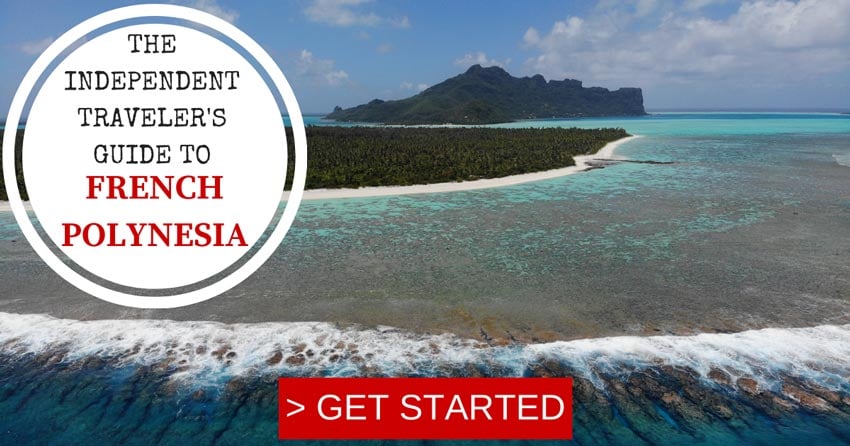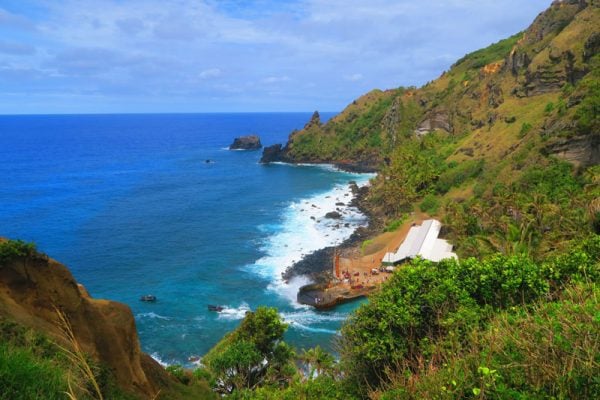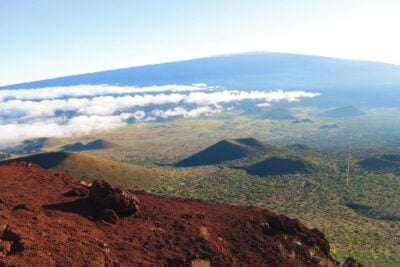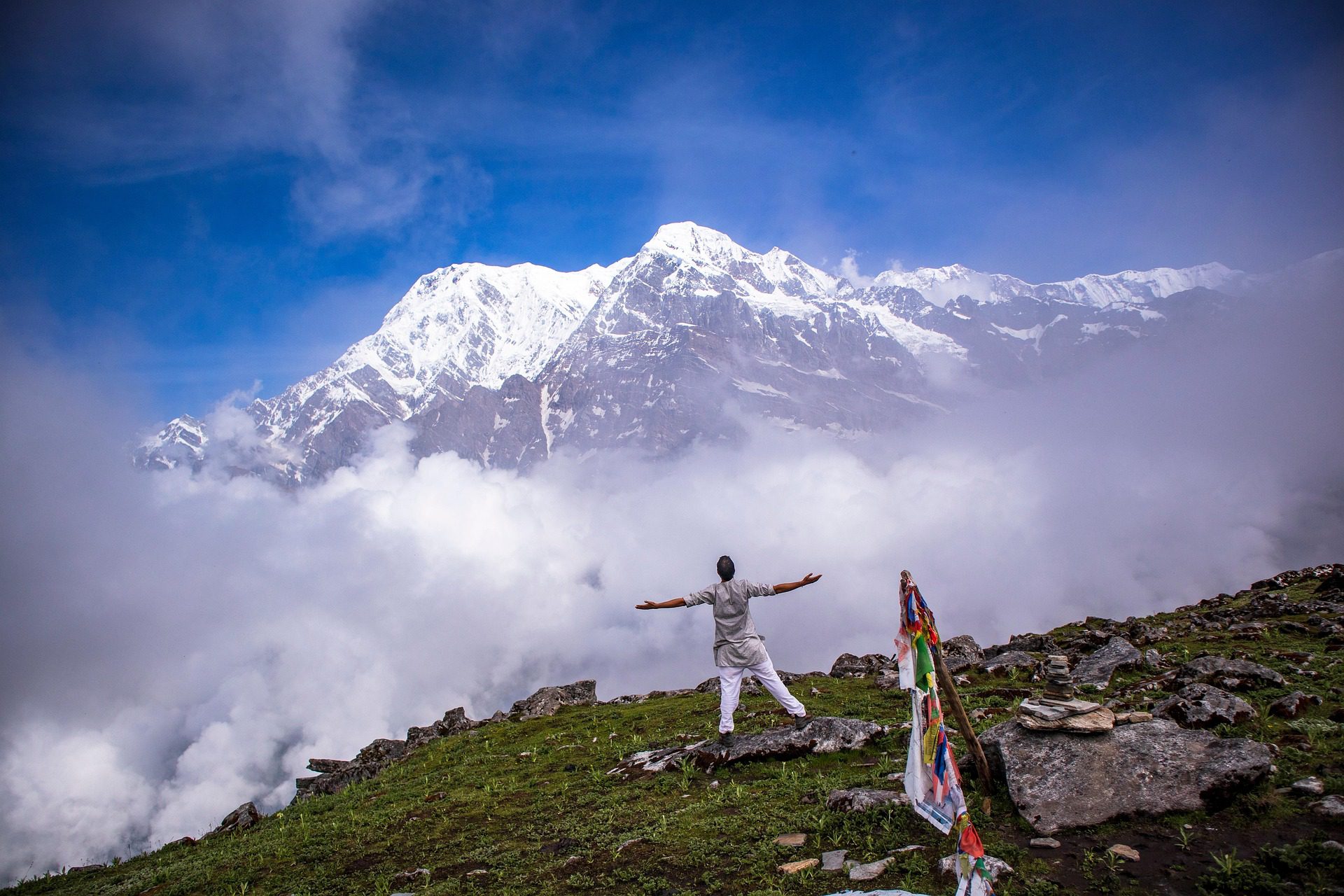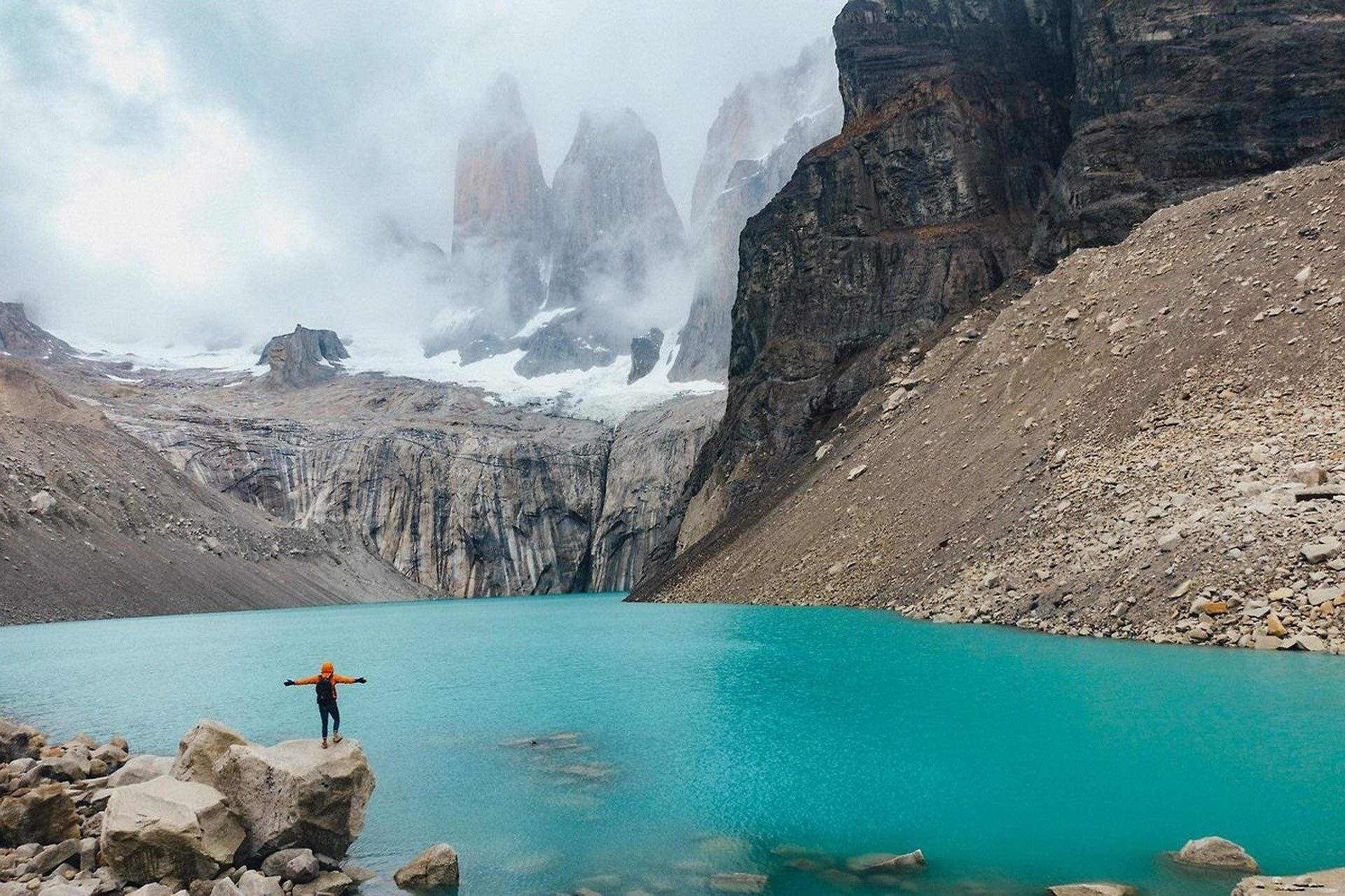The Hunt For The Rarest Flower In Raiatea Island
A short boat ride away from the vanilla island of Tahaa, it was back to Raiatea for an action packed four days. This would be the fourth of nine islands visited on this island hopping segment of my visit to French Polynesia, and it would be one of the most pleasant surprises of my trip so far. Raiatea is known as the ‘sacred island’, home to the most important spiritual center for the ancient Polynesians. It’s also home to one of the rarest flowers on the entire planet! In this update from the South Pacific Islands, we’ll be on the hunt for both, along with some of the most exquisite hiking so far on this journey.
Heading off to French Polynesia? In-depth island guides to all 5 archipelagos await you, including sample itineraries and essential travel tips & tricks.
Tahiti, Tailor Made!
The Islands of Tahiti are among the last places to be colonized by mankind, 118 islands, each with its unique personality.
Get expert advice and assistance with planning your trip to the destination where tropical dreams come true!
Raiatea 101
Raiatea is the second-largest island in the Society Islands archipelago after the island of Tahiti, but with a truly Polynesian population of no more than 4,000 – it feels genuinely remote. Raiatea means ‘faraway heaven’ and ‘sky with soft light’ – you’ll soon see why. The island was probably settled by Samoans, way back in the day – nobody exactly knows when or how. In ancient Polynesian times, the island was the spiritual center of the entire Polynesian triangle, encompassing Hawaii in the north, Easter Island in the east and New Zealand way out west. That’s a massive spiritual distance to cover! Captain Cook made three voyages to Raiatea, followed by the missionaries and finally the French. Little is left of that ancient culture aside from the ruins of temples and a few locals who still speak of the legends.
The island shares the same lagoon with neighboring Tahaa, but gets much fewer visitors than some of the other mass-marketed islands in the archipelago like Bora Bora or Moorea. Perhaps this is because there are no worthy beaches to mention on the island itself. Those can be found either by venturing out to the white sand motus (small islands within the lagoon) or appreciated from high up in the sky on one of the breathtaking hikes the island has to offer. Those hikes would not be possible without the presence of massive mountains, and Raiatea has plenty of them. Massive, lush and wild – Raiatea is a nature lover’s paradise!
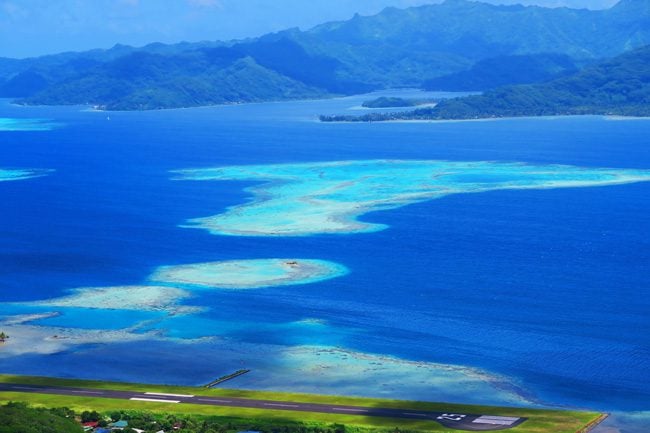
I arrived back in Raiatea after living the life of luxury for a night back in Tahaa. It was back to reality for me, with action-packed days and very little lounging in the sun. But that’s exactly what I was hoping for. Before I left on my six-month trip, friends would wonder how on earth could I spend all that time on tropical beaches. That’s exactly the thing – every island in the South Pacific is vastly different than the other. The culture, the geography, the marine life – it’s all so uniquely different and there’s just so much to see and do.
Checking out the island’s ‘biggest’ town
The day was already half gone, so I just went to check out ‘downtown’ Uturoa. This is the second largest town in all of French Polynesia after Tahiti’s Papeete. After visiting a few islands, I now understand why locals feel that Papeete is so cosmopolitan, despite being a small city in comparison to back home. But there’s everything you need here and that’s all that matters. It feels busy, with locals coming in and out of their cars to run their daily errands and even small squares where you can grab a bite to eat in one of the local snacks (local ‘fast food’ shops). The town is situated by a beautiful harbor, with Mount Tapioi on one side and the beautiful lagoon on the other.
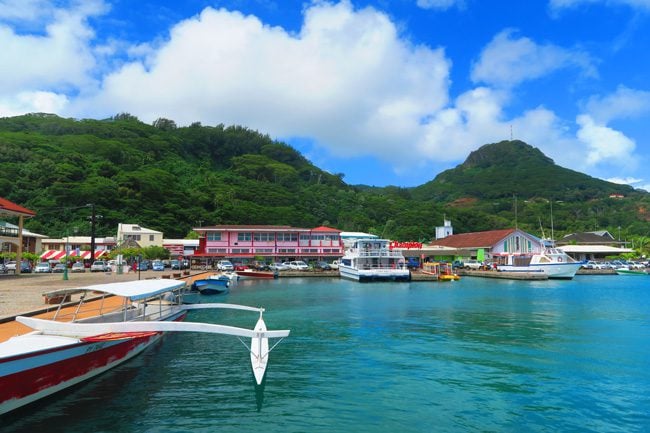
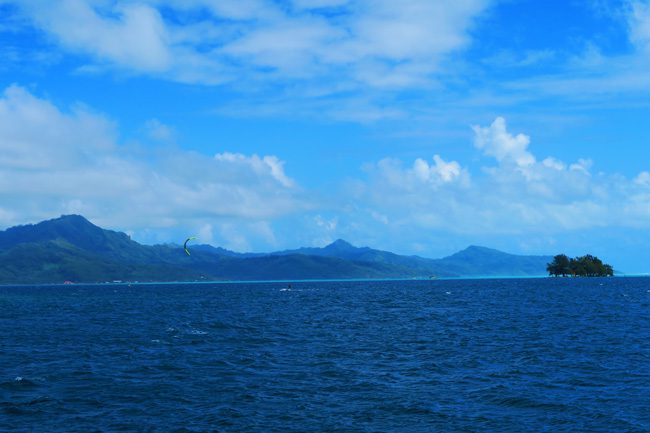
Uturoa also has a small-scale fruit and vegetable market that’s open throughout the week. It’s a good place to chat with locals, stock up on local produce and rehydrate with an ice-cold fresh coconut.
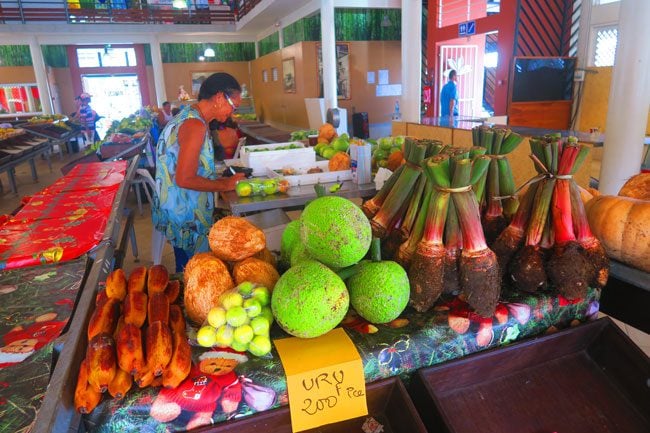
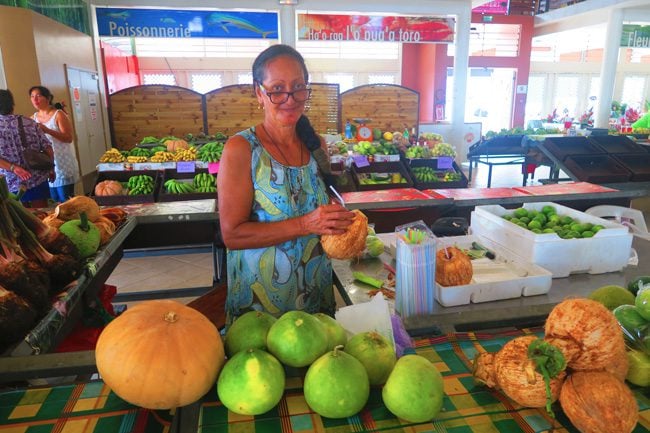
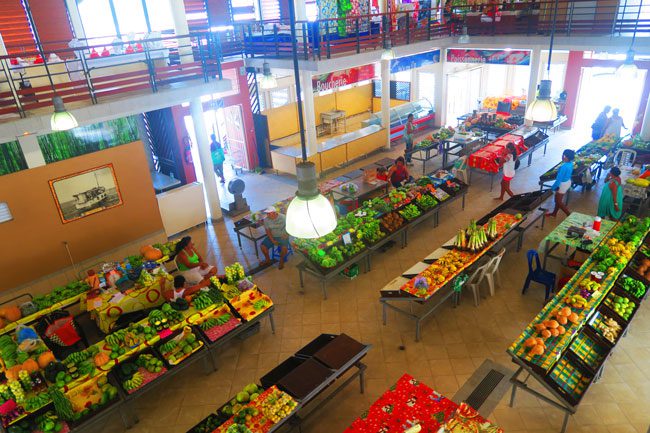
After settling down, it was time to call it a night. The weather was meant to be pretty bad this week, but the one thing I learned in the Pacific is to never trust the forecast. It’s even less accurate than your company’s weekly sales forecast. The night sky was practically clear, and you could see millions of stars shining brightly. I’m starting to like this place…
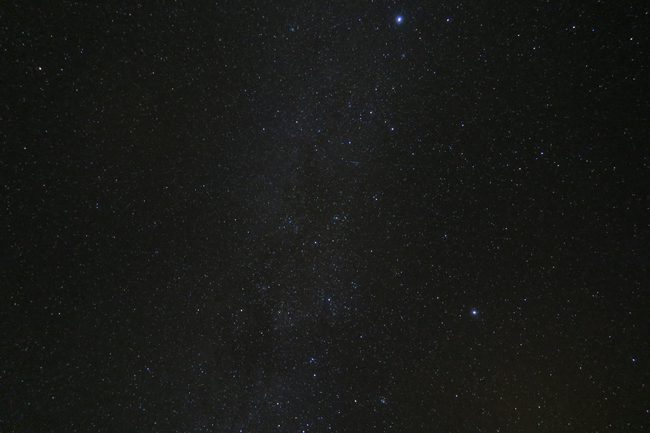
Roadtrippin’ in Raiatea
The basic rule of thumb when the skies are clear at night is that it’s going to be a beautiful day tomorrow. This turned out to be true yet again, so I rented a car for an action-packed day of hiking and circling the 98 km island.
Back in Uturoa, I found the trail leading up to Mount Tapioi. Though only 294 meters high, the mountain offers the chance to venture into the interior and get some fantastic panoramic views of the area. It looks pretty daunting when viewed from town, but it’s actually an easy hike. Many locals use the trail for their exercise routine, and you often see healthy-looking Tahitians jogging up and down the mountain.
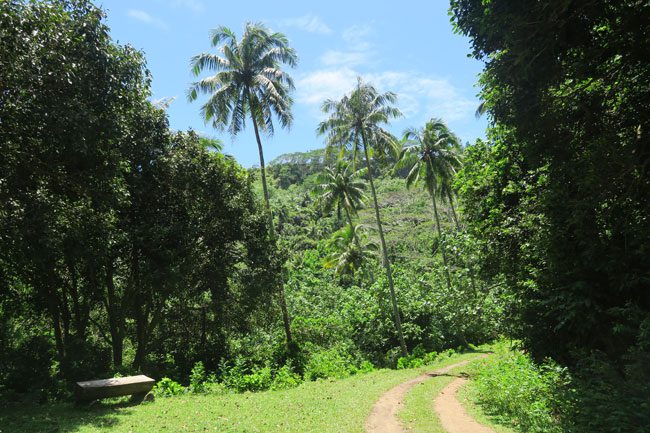
The views from the top are to die for. You can clearly see the town below your feet and Tahaa just across the lagoon, with the colors changing to provide that classic South Pacific view. On a clear day, like this one, you can even see Bora Bora in the far distance.
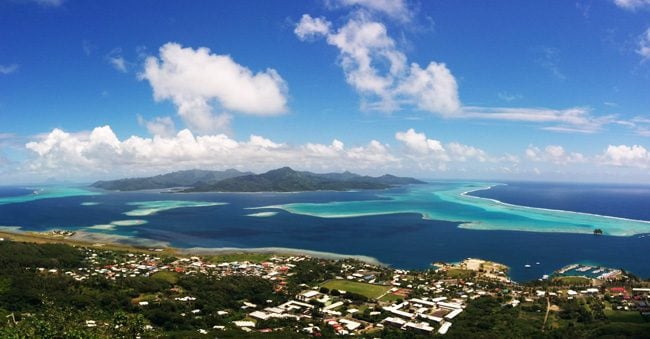
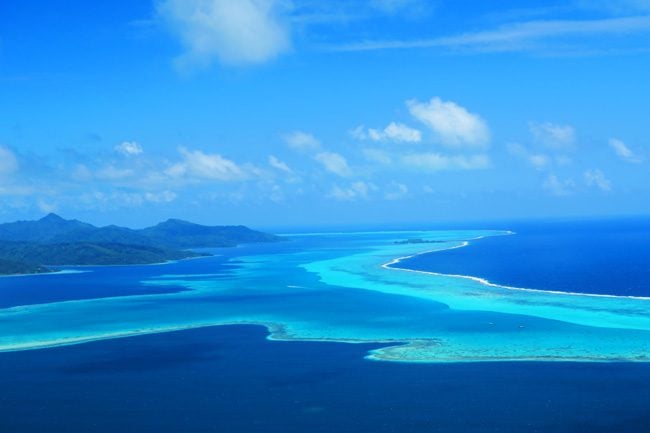
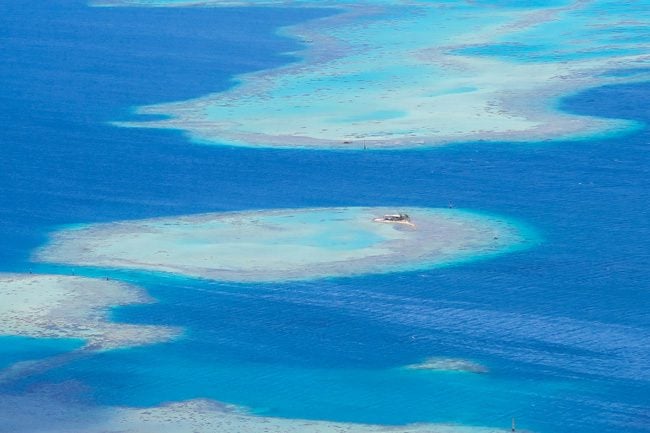
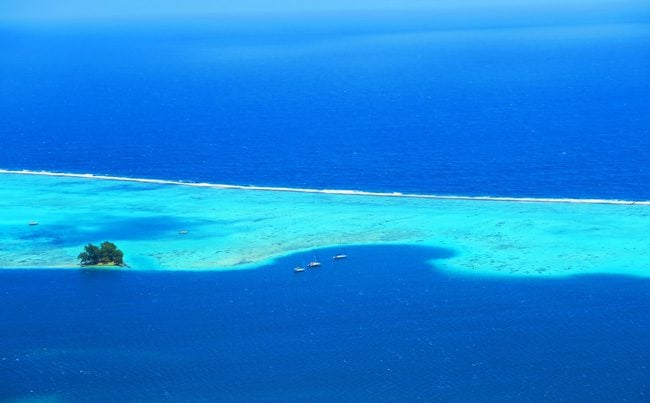
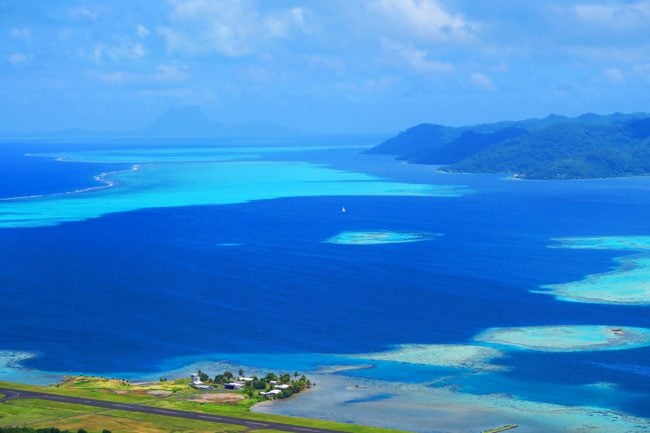
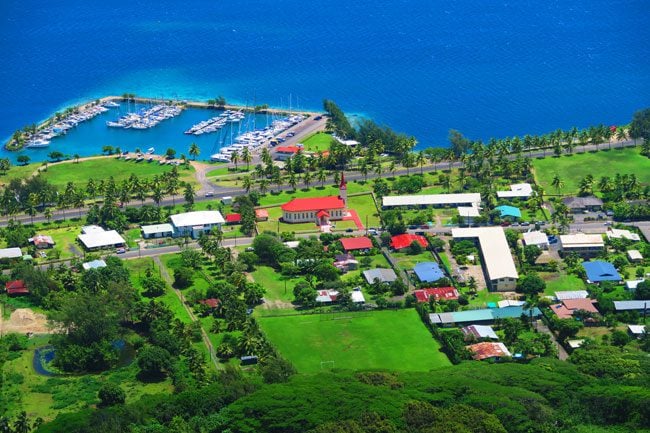
From up here, I could also see where I was headed, miles and miles of lush mountain country – so let’s get back to the car and start road-trippin’ around Raiatea!
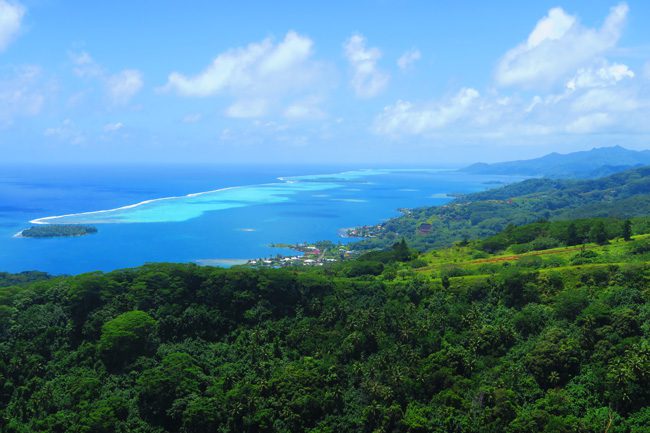
Raiatea’s plentiful sites are best discovered when circling the island. This island is just so wildly pretty. I must have stopped like 30 times along the way, pulling over by rivers, beautiful bays and mountain vistas. The island reminded me of Moorea, only with a fraction of the people you come across – and they always greet you with a smiley ia orana (hello in Tahitian).
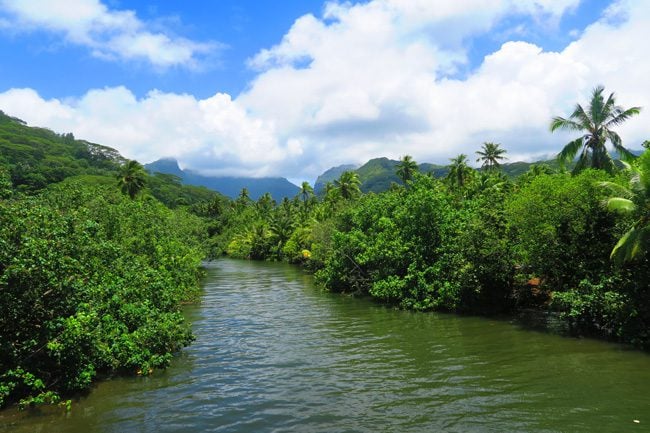
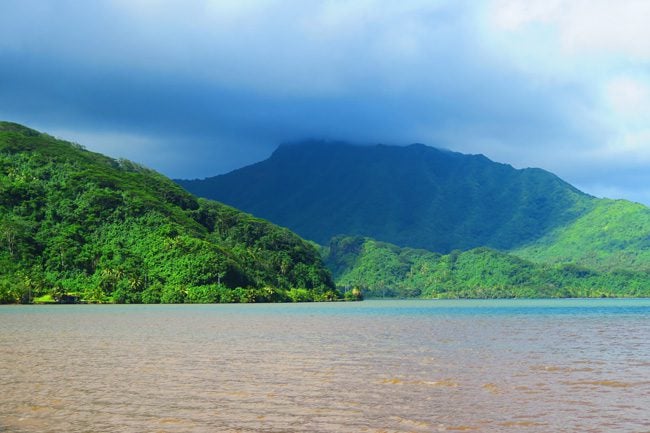
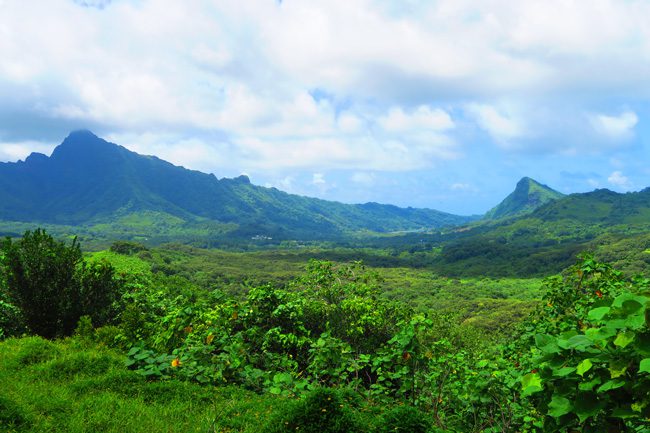
After rounding Faaroa Bay, I came across the first sight of a copra operation. Copra is the dried ‘meat’ of the coconut, and it is later used to extract coconut oil. Copra used to be a major source of income for Tahitians, but these days, only a handful of islands still bother to produce this commodity. When the coconuts are sliced, they are placed in this innovative little hut with a giant sliding tray. The flesh is left to dry out in the sun until it is ready to be shipped off for extraction.
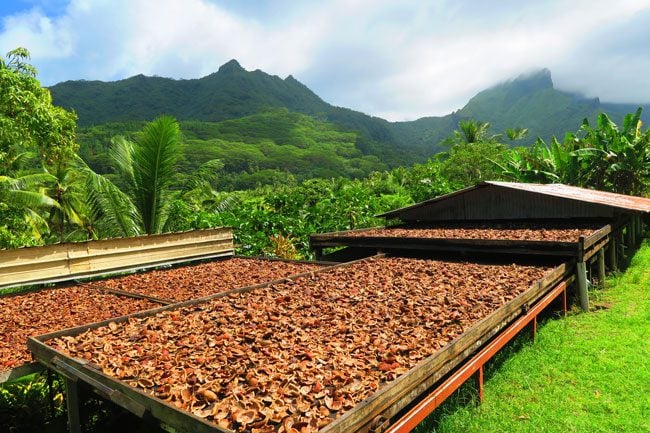
The holiest Polynesian temple
The first planned stop was at Marae Taputapuatea – a UNESCO World Heritage Site. This marae (ancient Polynesian temple), is the most important marae in all of the South Pacific. It’s been around for centuries and was the place where priests from all around Polynesia would gather at specific times for key ceremonies and knowledge sharing. Visiting this remote place made me wonder how on earth did ancient folks gather here from the vast distances of the Pacific Ocean. There was no email and no fire signals could ever reach the distant islands. I’ve visited quite a few marae in both Samoa and the Cook Islands, but this one really takes the lead.
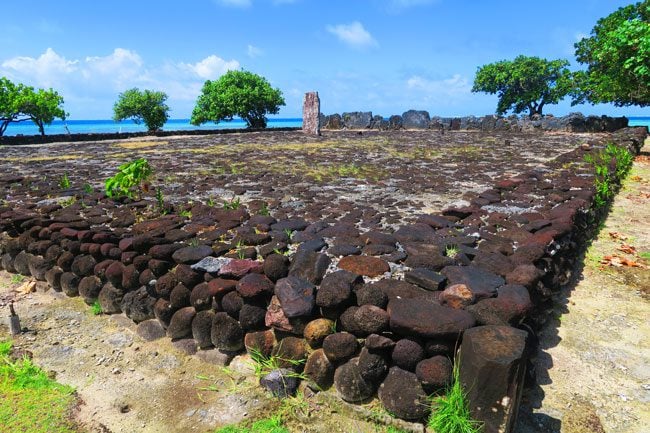
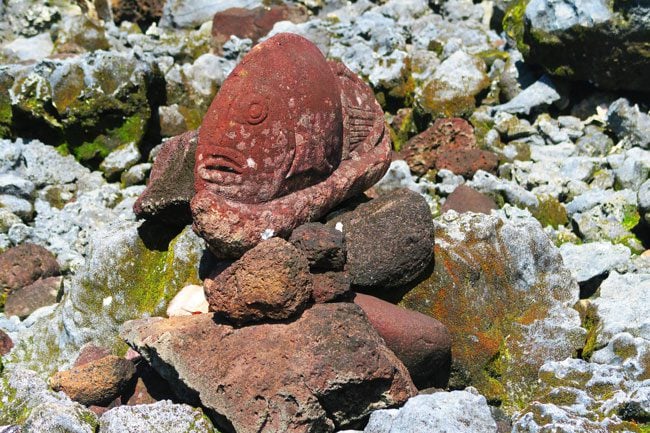
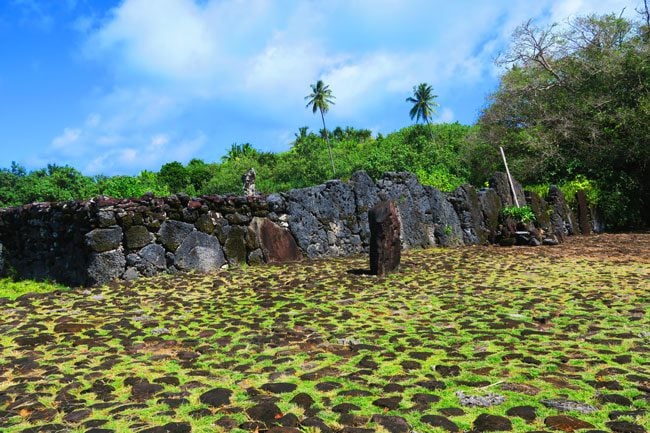
From Marae Taputapuatea, the ring road ventured up the hill for some more sublime views. I can just picture Captain Cook’s ship anchored in one of these bays, on his quest to discover this new exotic land.
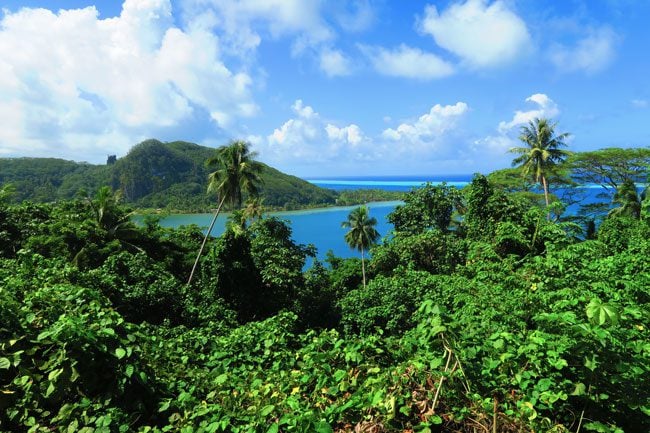
Vistas, bays and strange palm trees
Now on the southern coast of Raiatea, this was the least populated part of the island. Wild beaches, sleepy villages, endless coconut plantations, towering cliffs and beautiful bays – are what was in store for this part of the road trip.
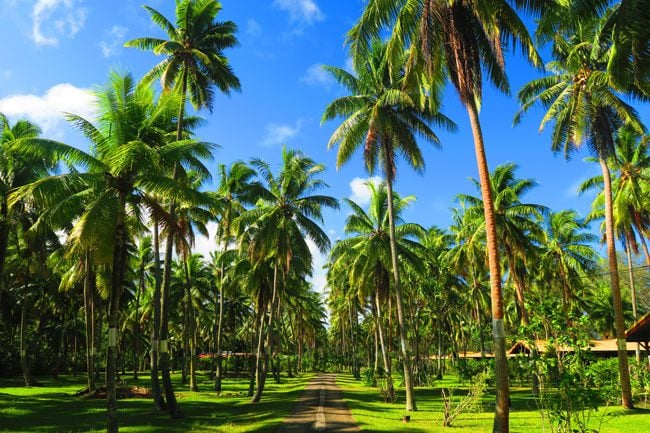
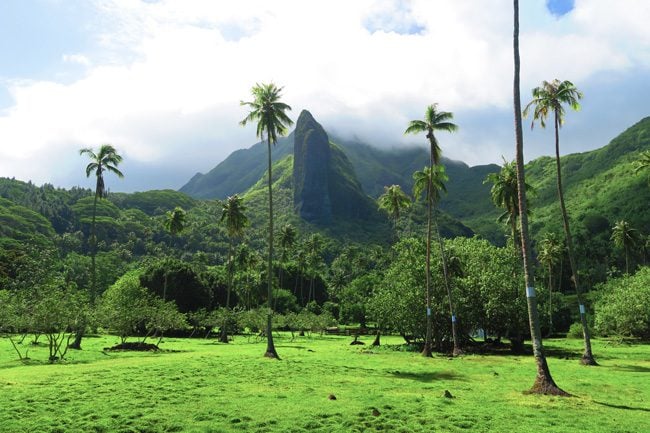
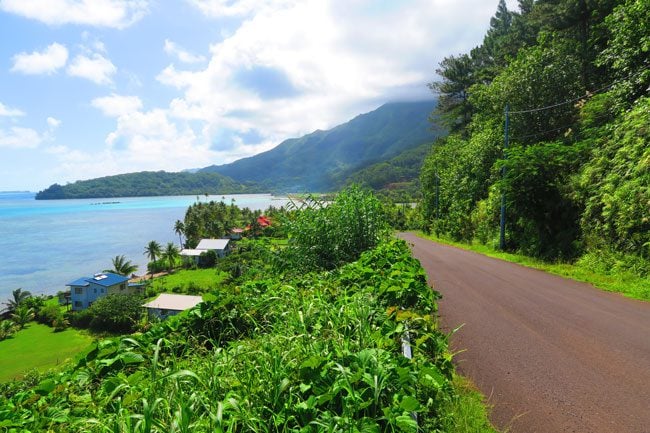
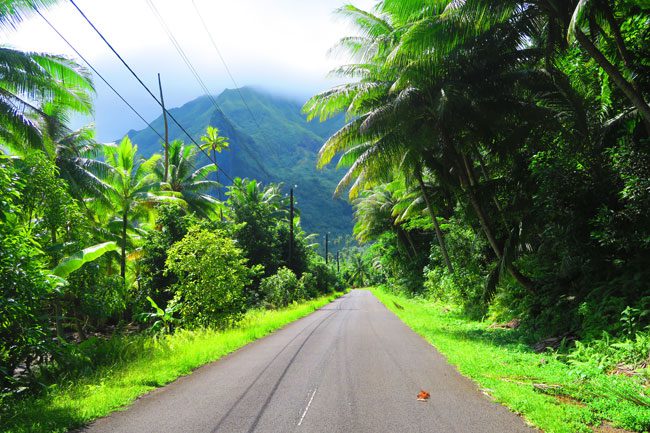
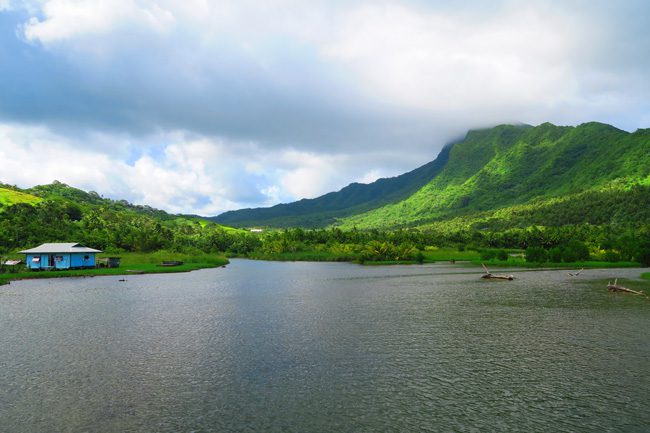
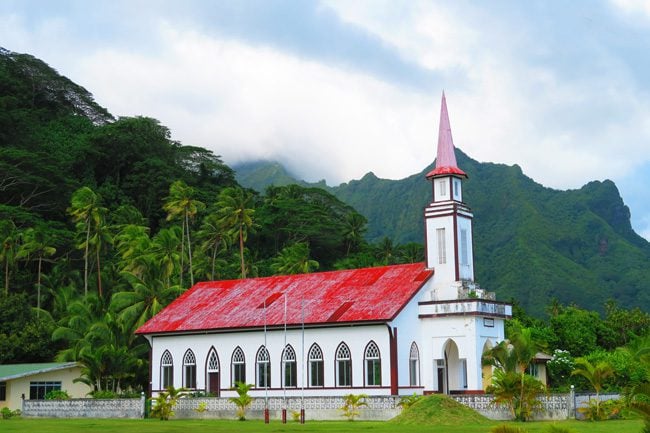
I came across a few interesting-looking palm trees, some on tiny motus smack in the middle of the lagoon that had enough room for three or four trees. I’ve seen thousands of palm trees so far on this trip, known around here as ‘the trees of life’, but I’ve never seen them grow horizontal to the water. So cool and so wild!
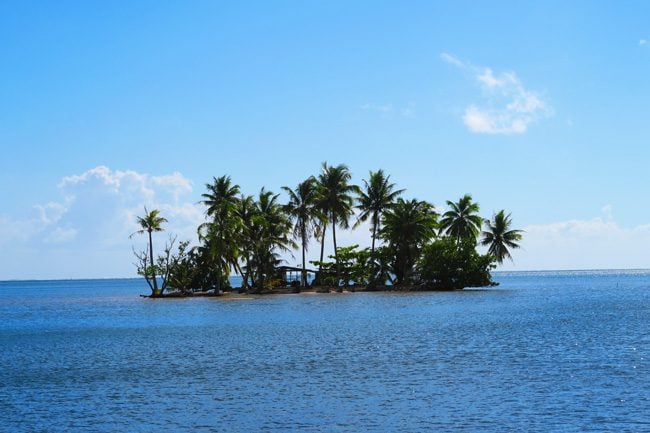
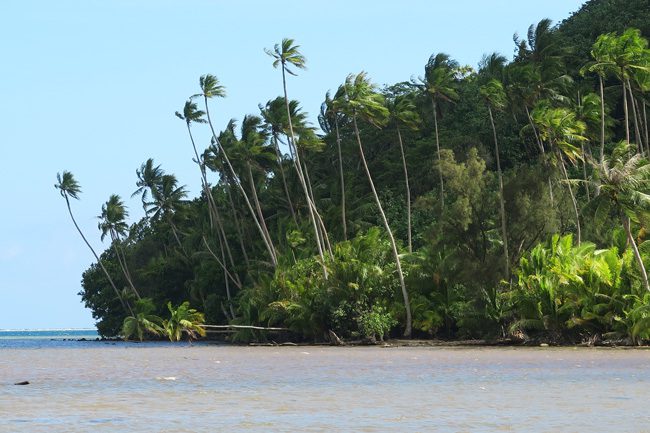
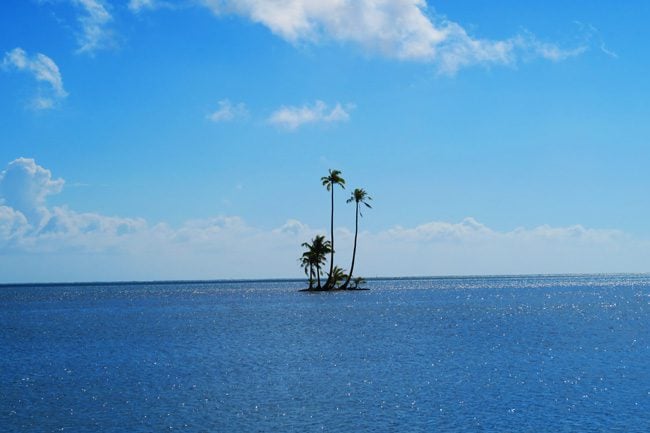
After a magical few hours on the road, quite a few spent on the side of the road digesting the views, it was time to wrap up this road trip around Raiatea and head back to town. Tomorrow is going to be a very busy day!
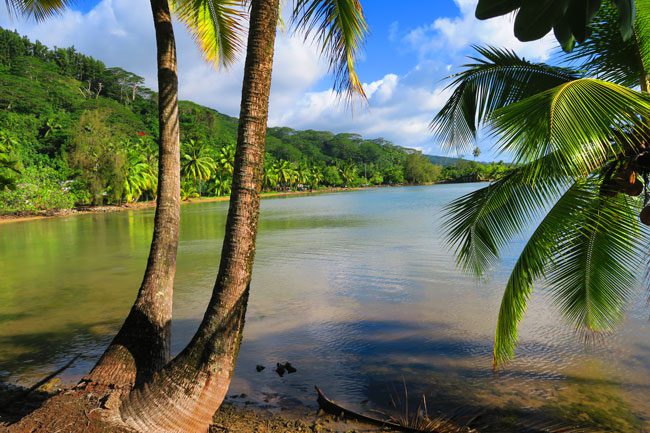
The hunt for the rarest flower
The following morning I was picked up bright and early by Kiam, my guide for the day. We picked up a French doctor on his last leg before heading back home, and ventured on our quest to find one of the world’s rarest flowers. The Tiare Apetahi is a flower that only grows in Raiatea and only in a very specific section, up high in the mountains. Botanists from around the world have tried to grow this flower in other parts of the Raiatea and on other islands – with 0% success. Why? Nobody has a clue, but they’re still working on that.
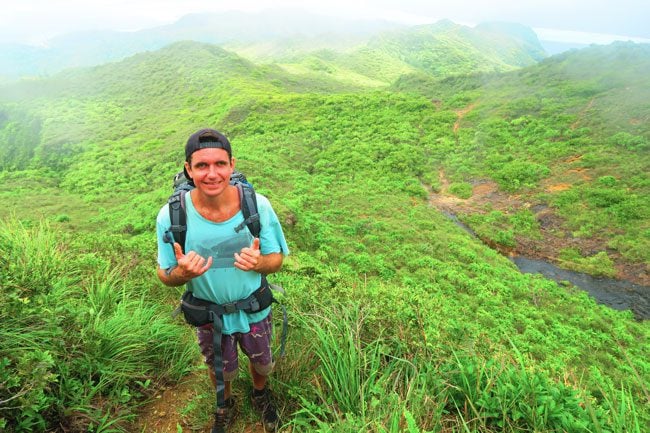
We parked the car on the side of the road and began hiking up an unmarked trail to the northern section of the Temehani Plateau at 650 meters – on the hunt for the rare flower.
We began the climb through a thick pine forest, which really looked like a scene from somewhere in Europe. This would be the theme for the day, as it would feel as if we were teleported thousands of miles away from the tropical paradise that lies below. Kiam explained that these pines were brought over in the ’50s or ’70s in an effort to boost the local lumber industry. The results were disastrous: the pines grew wildly, eradicating much of the native vegetation and the wood wasn’t even of good quality and too expensive to ship… You really shouldn’t mess with nature. Why can’t we learn that?
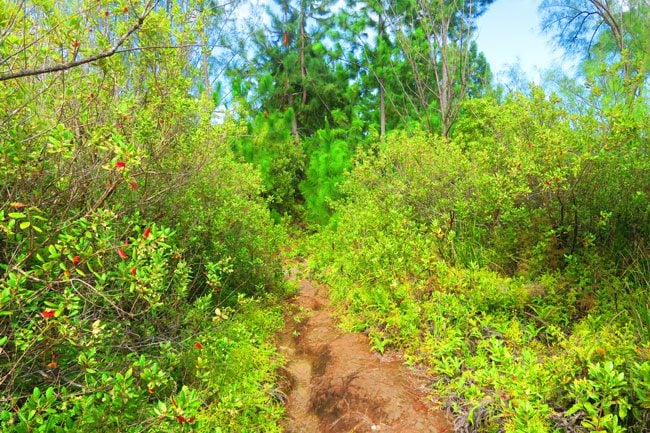
Along the way, we did manage to find a few impressive local plants, like this pineapple-like fruit and the red Tahitian ginger – that when squeezed, oozes with a scented liquid.
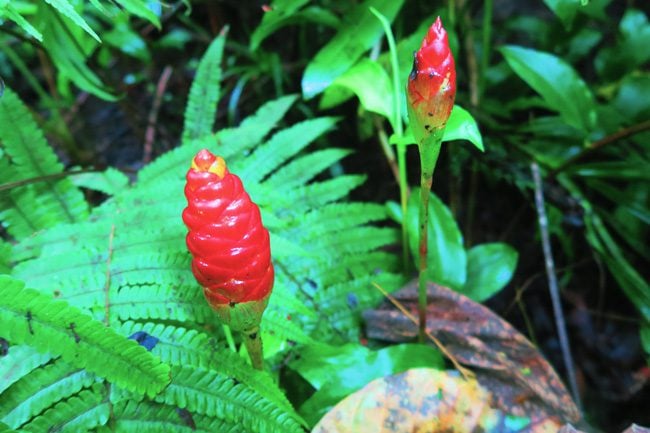
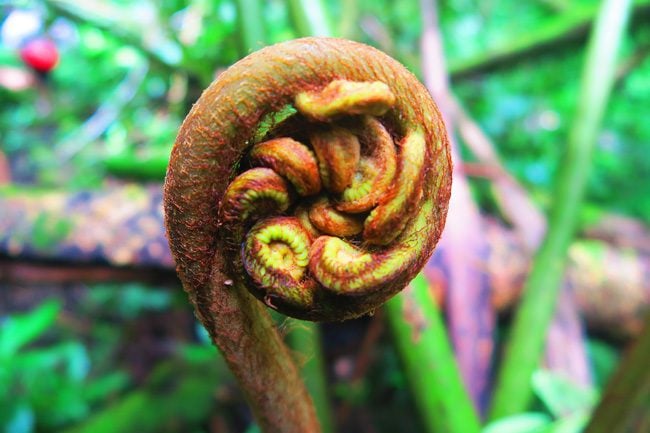
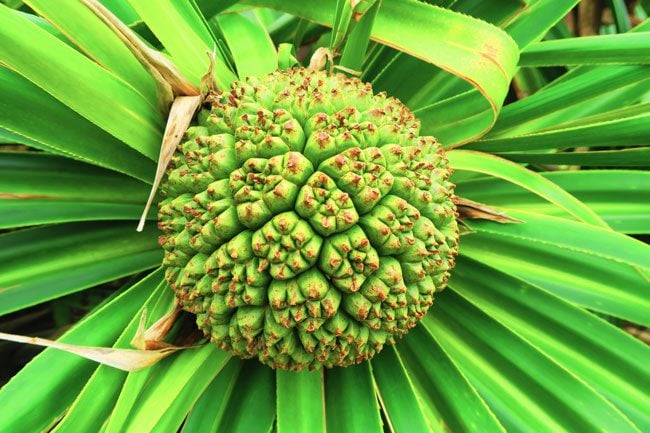
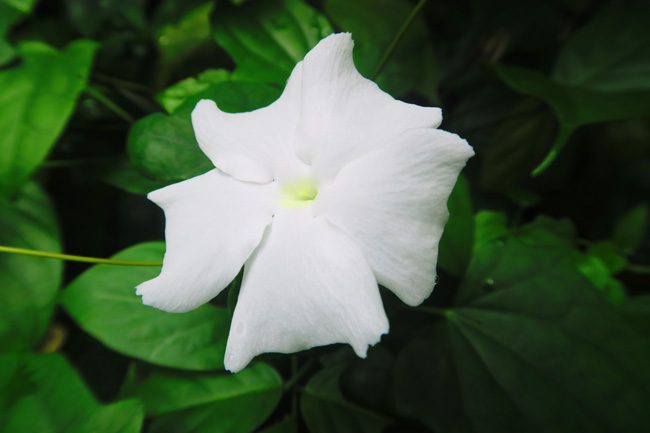
As we made it to the top of the plateau, the panoramic views were even better than those back on the summit of Mount Tapioi. What a gorgeous hike!
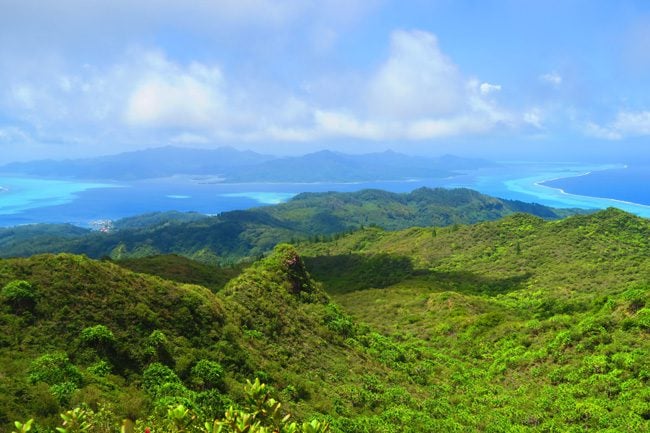
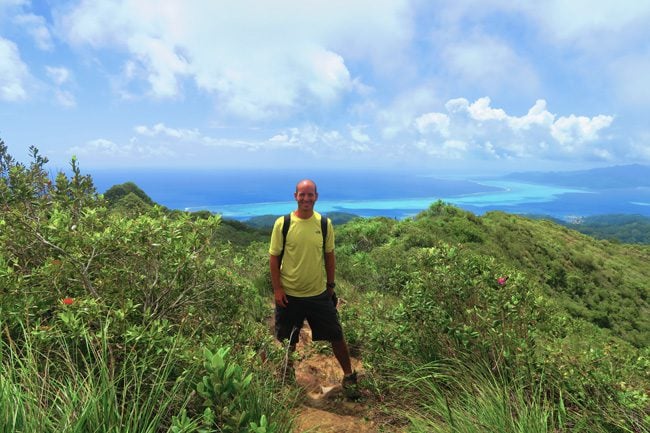
On the summit itself, the landscape dramatically changed once again. Kiam explained that the soil on the plateau is very acidic, rising from the now extinct volcano only some 200,000 years ago. Not much can grow up here. It now felt as if our teleportation became a bit more specific and we’re now somewhere in… Ireland. In fact, this is exactly what the first European explorers recounted.
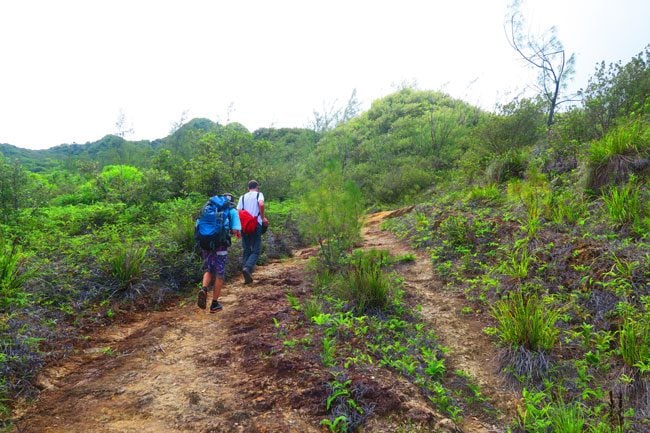
Now deep on the plateau, we were walking inside the clouds. Visibility was poor and it was quite slippery. We began walking on exposed volcanic rock, where water was constantly trickling, carving out deep channels. Kiam took us to a secret spot, a 40-meter deep lava tube with its own mini waterfall. Local legend always spoke of an underwater connection between Tahaa and Raiatea. After all, they do share the same lagoon. A while back, a scientist came to test this legend out and poured colored dye down this very same lava tube. The colors were visible somewhere in Tahaa, proving the legend!
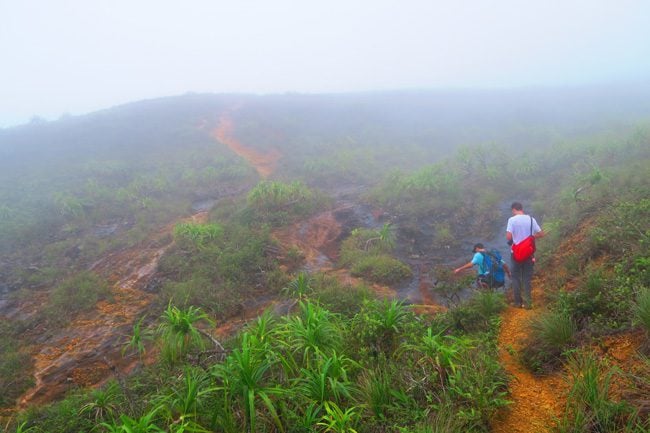
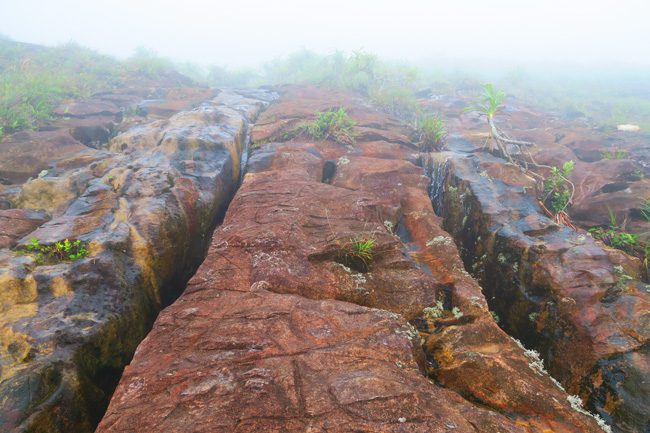
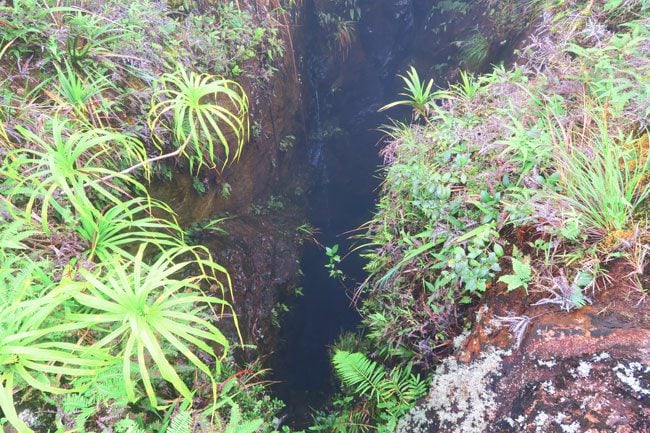
Achievement unlocked!
Still on the hunt for the Tiare Apetahi, we stopped at an ordinary-looking tree that held the grand prize. Achievement unlocked – here’s the Tiare Apetahi!
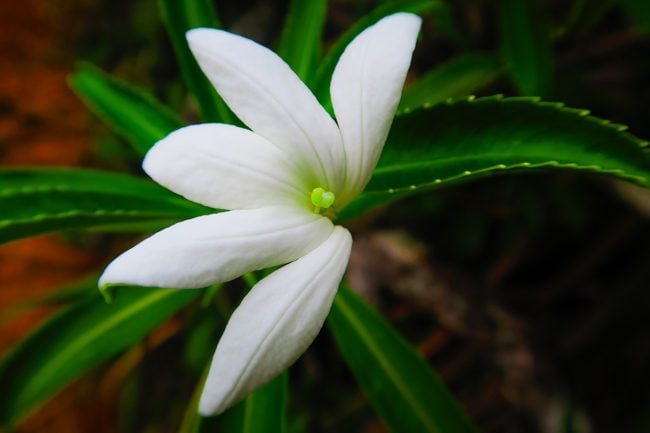
Legend has it that a long time ago, there was a beautiful Tahitian woman named Apetahi, who fell in love with the son of a king. When the prince had to leave the island on a royal quest, he assured the beautiful woman he would return. Waiting on the summit of the plateau to scout for her lover’s returning boat, she could no longer overcome the burden of waiting. She cut her arm off, planted it in the ground and jumped into the abyss. Out sprung the beautiful flower, with five petals in the shape of a hand.
With the rare flower discovered, we began descending down an ultra slippery slope. I usually have the ‘customary’ slip n’ slide on every hike, but in this segment alone, it happened at least three times. The views were well worth it, with waterfalls and green vistas.
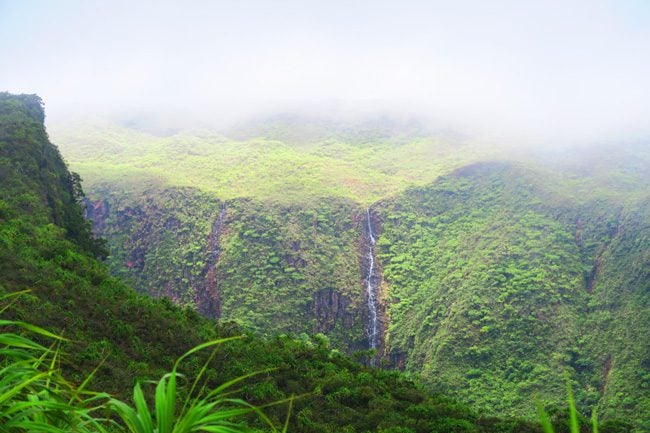
We stopped for lunch at a waterhole and made our way down to complete this arduous seven-hour hike.
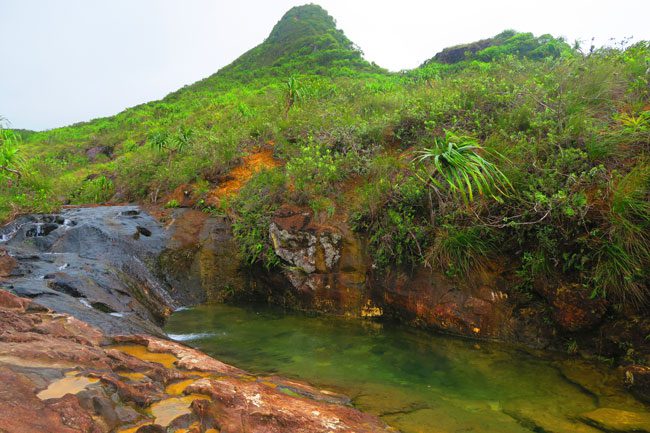
In search of the 3 waterfalls
The following day, my last in Raiatea, I rejoined Kiam, the doctor and a few other French visitors for yet another hike. This time, we ventured deep inside the tropical rainforest in search of three waterfalls, known locally as Les Trois Cascades.
The rainforest was filled with hungry mosquitoes, but also with beautiful streams which we had to traverse, giant Tahitian chestnut trees (mape) and other giants which seem to be growing just about wherever they could.
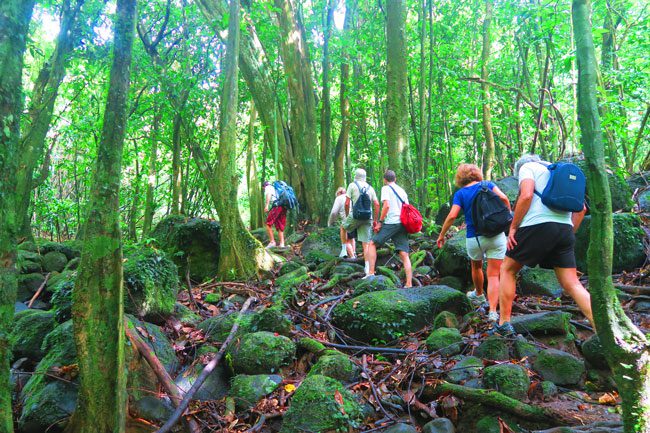
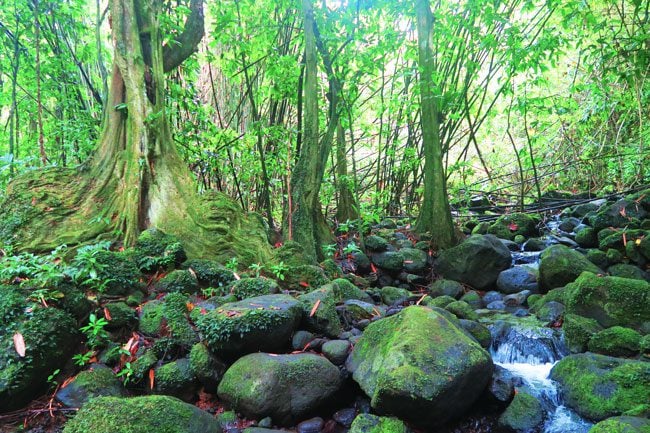
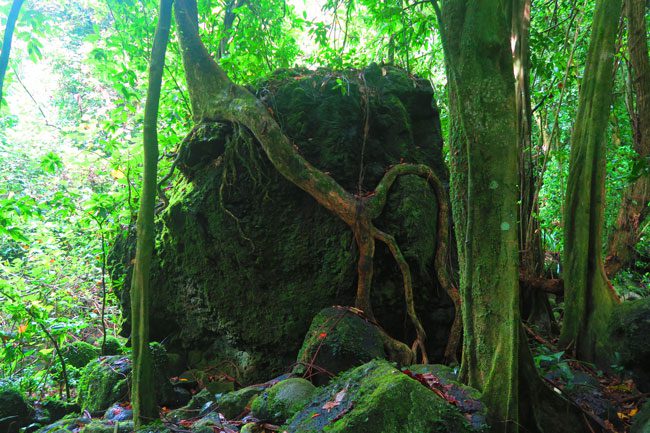
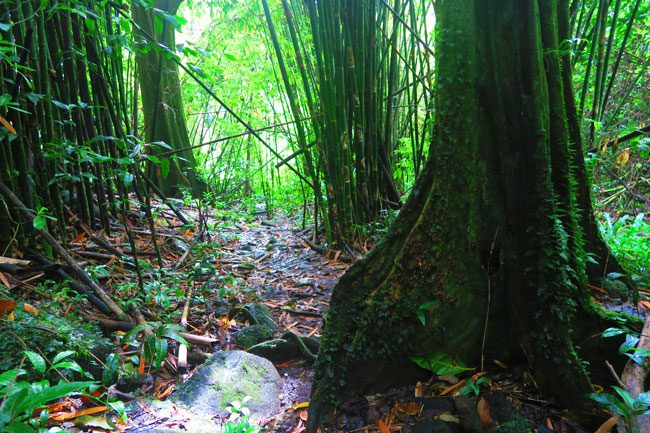
We also spotted a few beautiful native plants and a Candlewood tree, whose nuts are used as… candles.
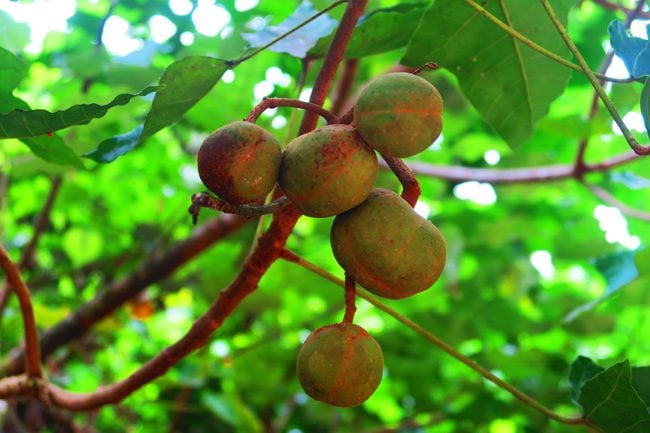
The three waterfalls are arranged in a perfect fashion (or imperfect depending on who you ask). The first and second are nice, but nothing out of the ordinary. It’s the third one that’ll blow you away.
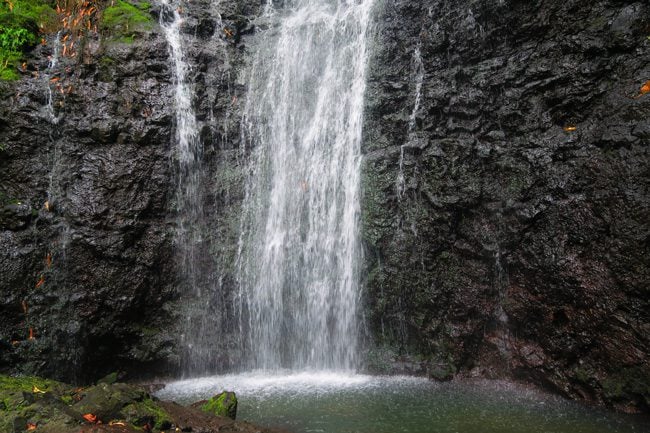
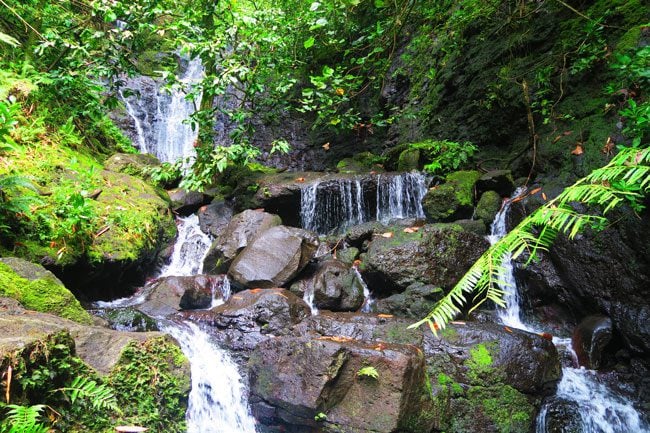
To get to the last waterfall, you have to use a series of ropes and watch out for every step. It’s always slippery over here but this is especially true in the rainy season, which is now.
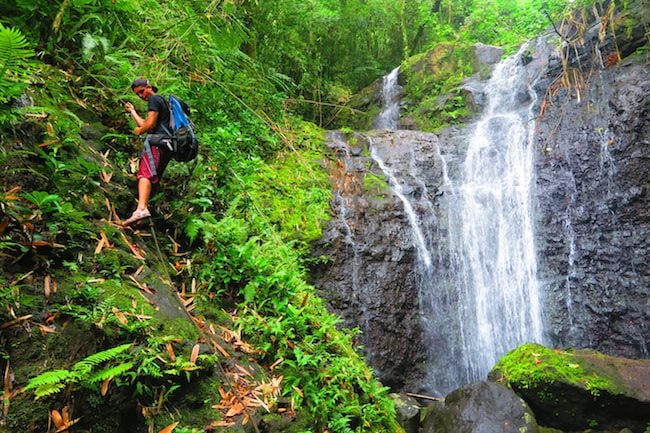
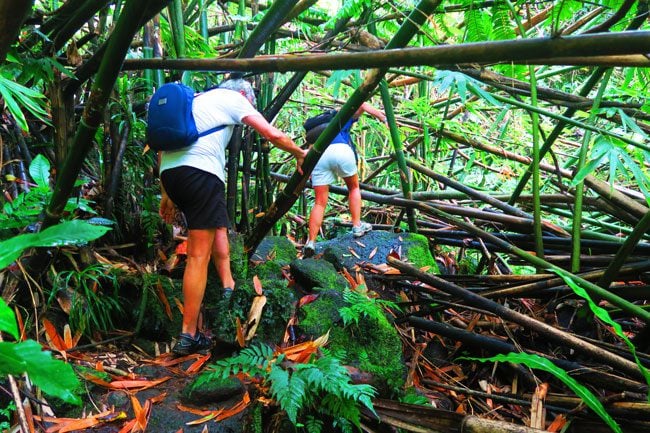
After a sweaty short hike from the second waterfall, you finally arrive at the grandest of them all: a waterfall splashing down into another waterfall! This is simply amazing.
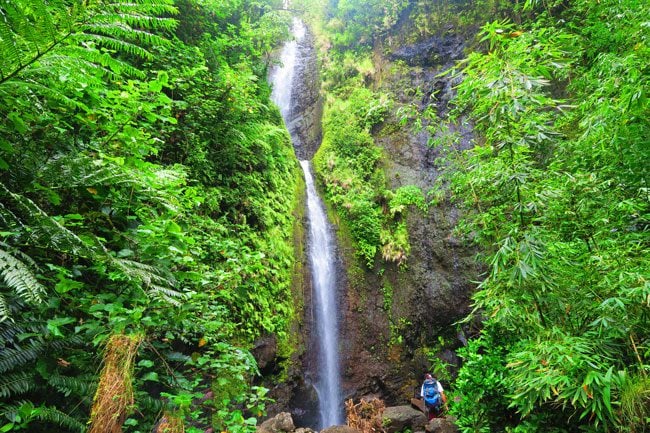
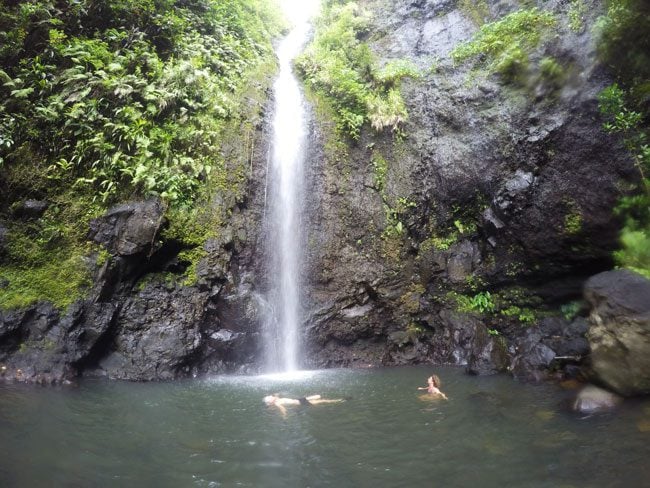
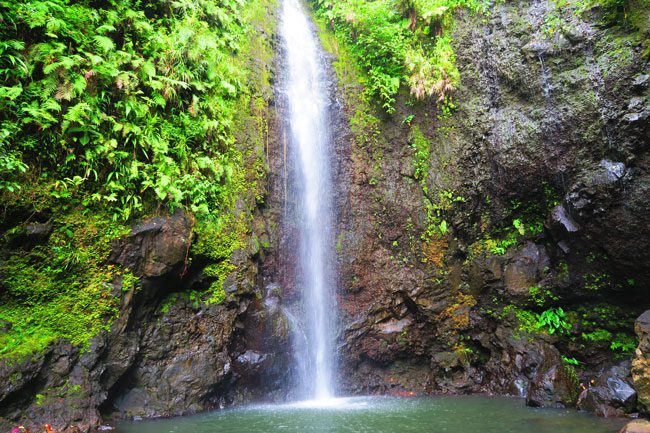
The giant waterfall is like a natural massage for the brain. It reminded me of the beautiful waterfalls back in Tahiti’s Papenoo Valley, but this one was more special. It was a good spot to park it for lunch, where we even saw a few freshwater shrimp running around in the shallow waters.
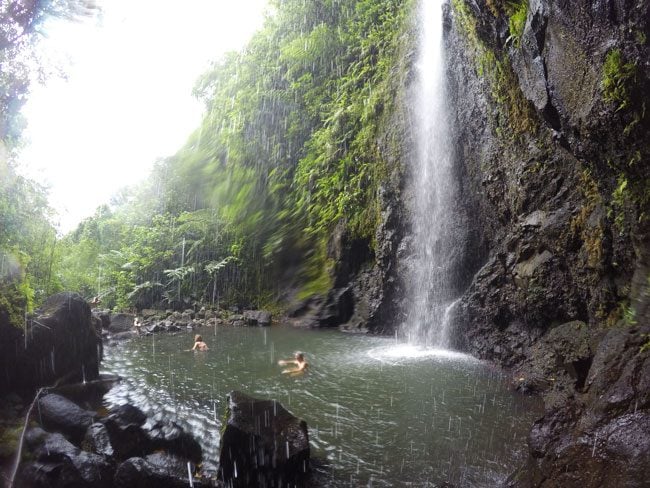
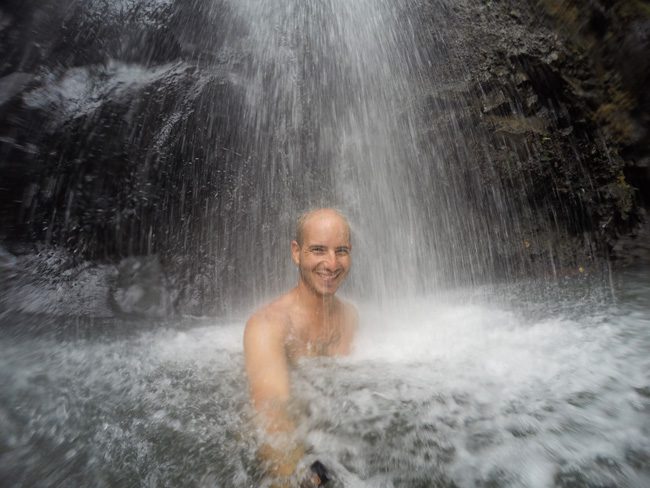
What’s the verdict?
As you’ve just seen, Raiatea is one hell of an island. If you’re looking for true South Pacific wild nature, this island’s for you. This was definitely a surprising highlight on my visit. No beaches, no lazing in the sun, just sheer beauty that can only be explored by getting out there!
What’s Next?
Saying goodbye to the twin islands of Raiatea and Tahaa, I’m off to visit Huahine Island, the final island I’ll visit in the Society Island group. Huahine is known as ‘the garden of Eden’. It’s another wild and sparsely populated island, with a ton of ancient history, beaches and mountains. See you next time!
Heading off to French Polynesia? In-depth island guides to all 5 archipelagos await you, including sample itineraries and essential travel tips & tricks.
Tahiti, Tailor Made!
The Islands of Tahiti are among the last places to be colonized by mankind, 118 islands, each with its unique personality.
Get expert advice and assistance with planning your trip to the destination where tropical dreams come true!
